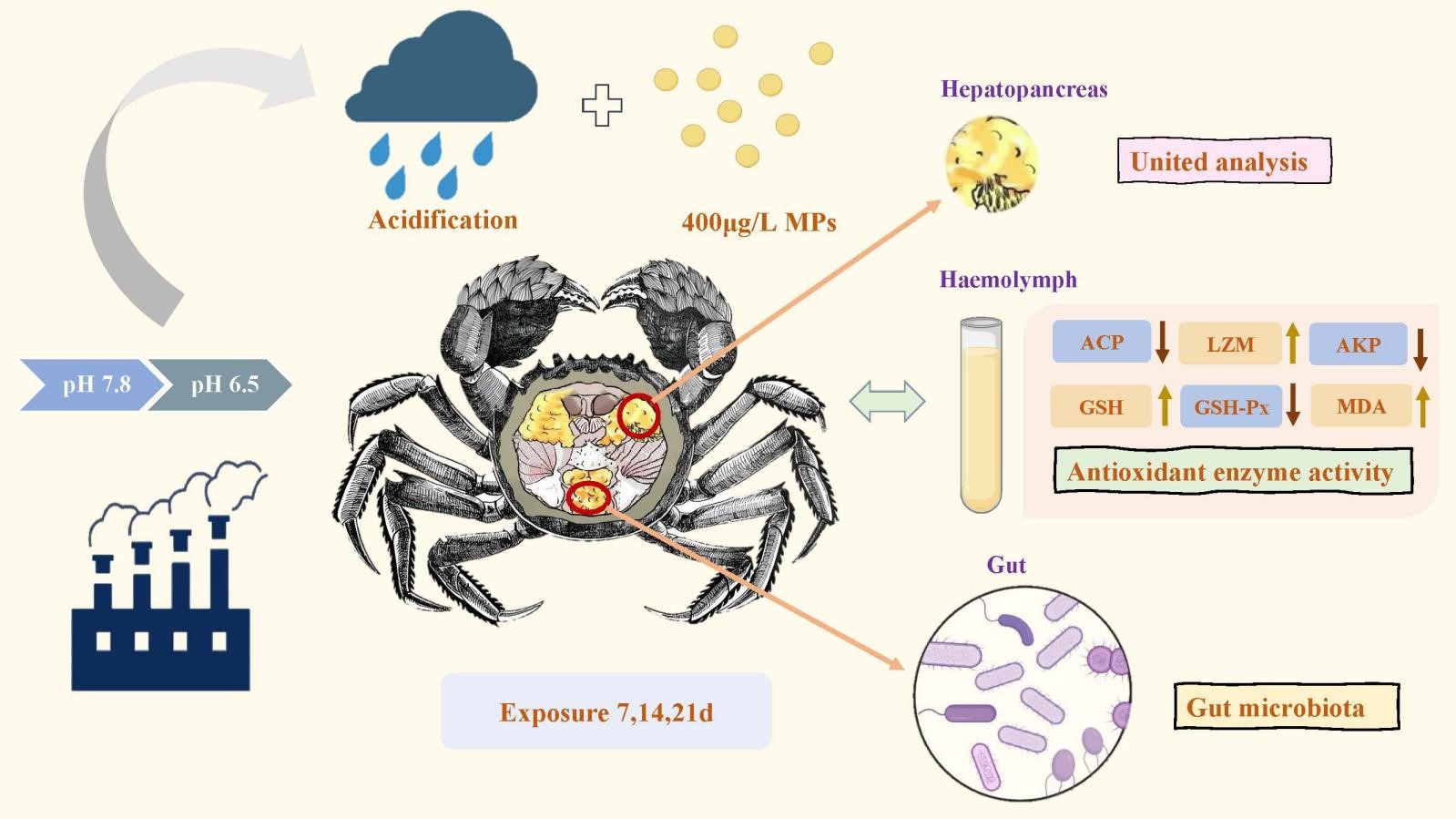Low pH aggravates toxicity of polystyrene microplastics in crab Eriocheir sinensis
Published 13 June, 2025
The concurrent intensification of global warming, population growth, economic development, and urbanization has led to rising plastic waste generation and worsening ocean acidification. Under these compounded environmental pressures, plastics undergo accelerated degradation through multiple mechanisms including seawater erosion, UV radiation, and microbial activity, generating vast quantities of microplastics (MPs) <5 mm in size. Simultaneously, rising atmospheric carbon dioxide (CO₂) concentrations enhance seawater dissolution, driving persistent pH decline.
“The global surface seawater pH has already decreased by 0.1 units since pre-industrial times, representing a 30% increase in acidity,” shares Zhigang Yang, lead author of a new study published in Environmental Chemistry and Ecotoxicology. “These dual stressors present unprecedented threats to aquatic ecosystems.”
Using Chinese mitten crab (Eriocheir sinensis) as a model organism, the research team employed a 21-day exposure experiment integrating enzyme activity assays, gut microbiota profiling, and hepatopancreas metabolomics to investigate individual and combined effects of low pH and polystyrene MPs.
The key findings include: (1) Combined low pH (6.5) and MPs exposure synergistically exacerbated oxidative damage and immune suppression; (2) While MPs alone primarily disrupted pyrimidine metabolism, co-exposure significantly impaired the TCA cycle and arginine biosynthesis while activating serotonin metabolism; (3) Gut microbiota maintained α-diversity but showed substantial COG functional alterations.
“Our results demonstrate how freshwater acidification amplifies MPs toxicity in crustaceans through immune-metabolic crosstalk,” says Yang. “They provide novel mechanistic perspectives for ecological risk assessment of multiple environmental stressors under climate change scenarios.”
The researchers encourage future research to incorporate more environmentally relevant MPs such as rubber and fibers to further enhance ecological relevance.

Contact author details: aqchen@shou.edu.cn (Aqin Chen a,b*), youjiwang2@gmail.com (Youji Wang a,b,c,**).
a Key Laboratory of Freshwater Aquatic Genetic Resources, Ministry of Agriculture, Shanghai Ocean University, Shanghai 201306, China
b Centre for Research on Environmental Ecology and Fish Nutrition (CREEFN) of the Ministry of Agriculture, Shanghai Ocean University, Shanghai 201306, China
c International Research Center for Marine Biosciences, Ministry of Science and Technology, Shanghai Ocean University, Shanghai 201306, China
Funder: This work was supported by the “14th Five-Year Plan” National Key Research and Development Program “Marine Agriculture and Freshwater Fisheries Science and Technology Innovation” Key Special Project (2024YFD2402203), the National Natural Science Foundation of China (No. 32273154), the Natural Science Foundation of Shanghai (22ZR1427300), the earmarked fund for CARS-48, the 2024 STCSM “Science and Technology Innovation Action Plan” (24320741100), and the Innovation Program of Shanghai Municipal Education Commission (2023ZKZD52).
Conflict of interest: The authors declare that they have no known competing financial interests or personal relationships that could have appeared to influence the work reported in this paper.
See the article: Yang Z, Liu J, Chen C, et al. Low pH aggravates the toxicity of polystyrene microplastics in crab Eriocheir sinensis: Evidence from metabolome and intestinal microflora[J]. Environmental Chemistry and Ecotoxicology, Volume 7, 2025, Pages 1095-1105, https://doi.org/10.1016/j.enceco.2025.05.015.